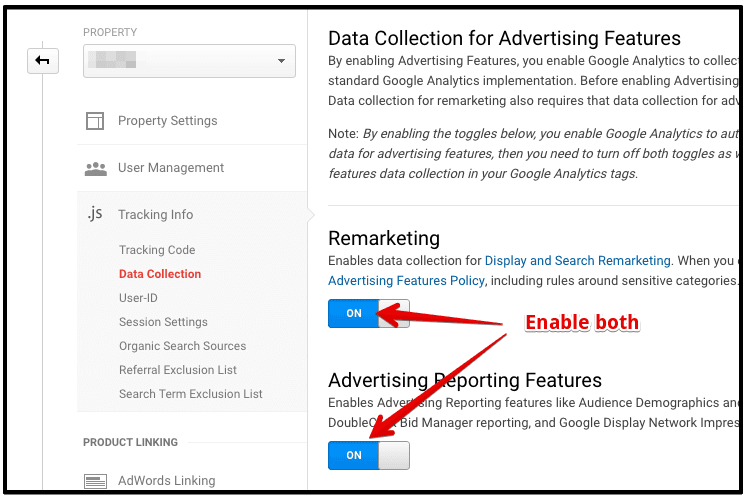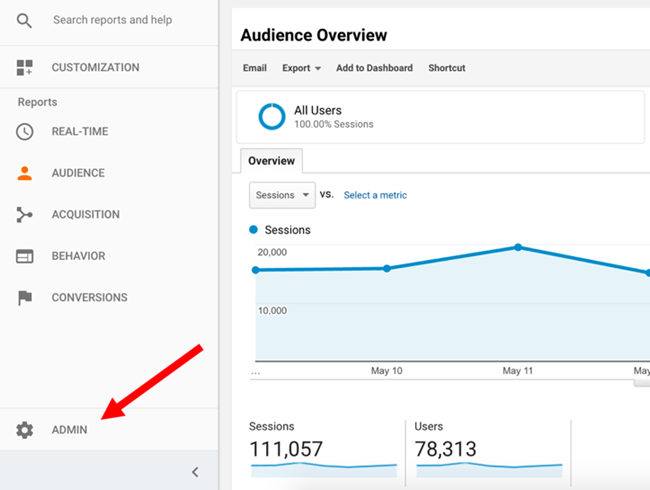Efficient Strategies for Remarketing In Google Analytics
Efficient Strategies for Remarketing In Google Analytics
Blog Article
Remarketing in Google Analytics: Changing Site Visitor Information Into Sales
The ability to exactly target audiences based on their behavior and choices opens doors to a realm of possibilities, thrusting organizations in the direction of sustainable development and productivity. Via a precise evaluation of visitor actions and a customized remarketing method, businesses can navigate the digital landscape with precision and finesse, untangling the true possibility of their on the internet visibility.

Advantages of Remarketing in Google Analytics
Remarketing in Google Analytics uses businesses the opportunity to reconnect with site visitors who have actually revealed passion in their services or products, thus enhancing brand visibility and conversions. By leveraging this powerful device, companies can stay top-of-mind with potential clients that have actually currently engaged with their website. Among the vital benefits of remarketing is the ability to target particular target markets based upon their actions on the web site, permitting for customized messaging and tailored ad campaign.
In addition, remarketing in Google Analytics can aid businesses raise their conversion prices by re-engaging with site visitors who may not have actually bought or finished a preferred activity on the internet site during their preliminary check out. This targeted approach can lead to higher conversion prices and eventually drive more sales. Additionally, remarketing can also assist organizations construct brand commitment and depend on by keeping constant interaction with prospective clients throughout their acquiring trip.
Establishing Remarketing Campaigns
When launching remarketing projects in Google Analytics, businesses need to meticulously prepare and execute tactical targeting techniques to properly reach their wanted audience. The primary step in establishing remarketing projects is to specify clear purposes. Whether the objective is to increase internet site conversions, promote specific products, or raise brand name awareness, having a distinct goal will certainly lead the entire campaign technique.
Following, companies need to create target market listings based upon details standards such as website visitors, customers who deserted their buying carts, or those who interacted with particular web content. These listings permit for targeted messaging tailored to each sector of the audience, boosting the chances of conversion.

Finally, companies need to establish conversion tracking to measure the success of their remarketing projects accurately. By analyzing the efficiency information, companies can enhance their advocate much better outcomes and higher ROI.
Leveraging Target Market Division for Remarketing
Making use of target market segmentation is a crucial method for boosting the efficiency of remarketing campaigns in Google Analytics (What Is “Remarketing” In Google Analytics?). By splitting your web site visitors into unique groups based upon their actions, demographics, or interests, you can tailor your remarketing efforts to target these particular segments with pertinent ads. Target market division enables you to develop more individualized and targeted campaigns, raising the opportunities of re-engaging site visitors and driving conversions
Segmenting your target market enables you to supply personalized messaging that reverberates with each group's needs and choices. For instance, you can produce separate remarketing listings for individuals who deserted their shopping carts, visited certain item web pages, or downloaded and install a specific resource. By understanding the different motivations and rate of interests of these sections, you can craft engaging ad creatives that are most likely to capture their focus and trigger them to review your website.
Additionally, target market segmentation likewise helps you optimize your ad invest by concentrating on high-value sectors that are more probable to transform - What Is “Remarketing” In Google Analytics?. By assessing the efficiency of each section, you can allocate your spending plan better and make best use of the return on your remarketing investment
Studying Remarketing Performance Metrics
To successfully evaluate the success of remarketing projects in Google Analytics, assessing crucial efficiency metrics is important. Metrics such as click-through rate (CTR), conversion rate, expense per acquisition (CPA), and return on advertisement invest (ROAS) give beneficial insights right into the effectiveness of view it your remarketing initiatives. CTR indicates the portion of individuals who clicked your ad after seeing it, mirroring the advertisement's relevance and attract your target market. Conversion rate determines the portion of customers who completed a wanted activity, such as making a purchase, after clicking on your ad. CPA helps figure out the cost of obtaining a customer with your remarketing campaign, while ROAS evaluates the earnings produced for every dollar invested on marketing. By evaluating these metrics, you can determine locations for enhancement, enhance your go to my blog projects, and allocate budget better to maximize the ROI of your remarketing techniques in Google Analytics.

Ideal Practices for Remarketing Success
Building on the structure of evaluating remarketing performance metrics, implementing best techniques is essential to attaining success in your remarketing ventures. Furthermore, make sure that your remarketing advertisements are aesthetically appealing and contain compelling phone calls to action.
Furthermore, frequency capping is necessary to protect against advertisement fatigue. Bombarding customers with the very same ad repeatedly can result in annoyance and reduced efficiency. Testing various advertisement styles, positionings, and messages is likewise important. A/B testing allows you to identify which strategies generate the finest results and enhance your campaigns accordingly. Last but not least, monitor your projects regularly, evaluate the data, and make data-driven decisions to constantly improve your remarketing efforts for maximum influence.
Verdict
To conclude, remarketing in Google Analytics uses organizations the chance to utilize visitor information to enhance sales and drive conversions. By using audience division, assessing performance metrics, and executing finest methods, organizations can tailor their remarketing efforts to target high-value sections successfully. With compelling advertisement creatives and conversion monitoring, companies click here for more can construct brand loyalty and trust fund, eventually making best use of the influence of their advertising approaches.
Through a thorough evaluation of site visitor activities and a customized remarketing strategy, services can navigate the digital landscape with accuracy and skill, untangling the true capacity of their on-line existence.
One of the key advantages of remarketing is the capability to target specific audiences based on their actions on the website, permitting for personalized messaging and customized advertising and marketing projects.
Additionally, remarketing can additionally help businesses develop brand name loyalty and trust fund by preserving constant interaction with prospective customers throughout their acquiring journey.
Metrics such as click-through rate (CTR), conversion price, cost per acquisition (CPA), and return on ad spend (ROAS) give important insights right into the performance of your remarketing initiatives. By assessing these metrics, you can recognize areas for improvement, optimize your campaigns, and allot budget extra properly to take full advantage of the ROI of your remarketing strategies in Google Analytics.
Report this page